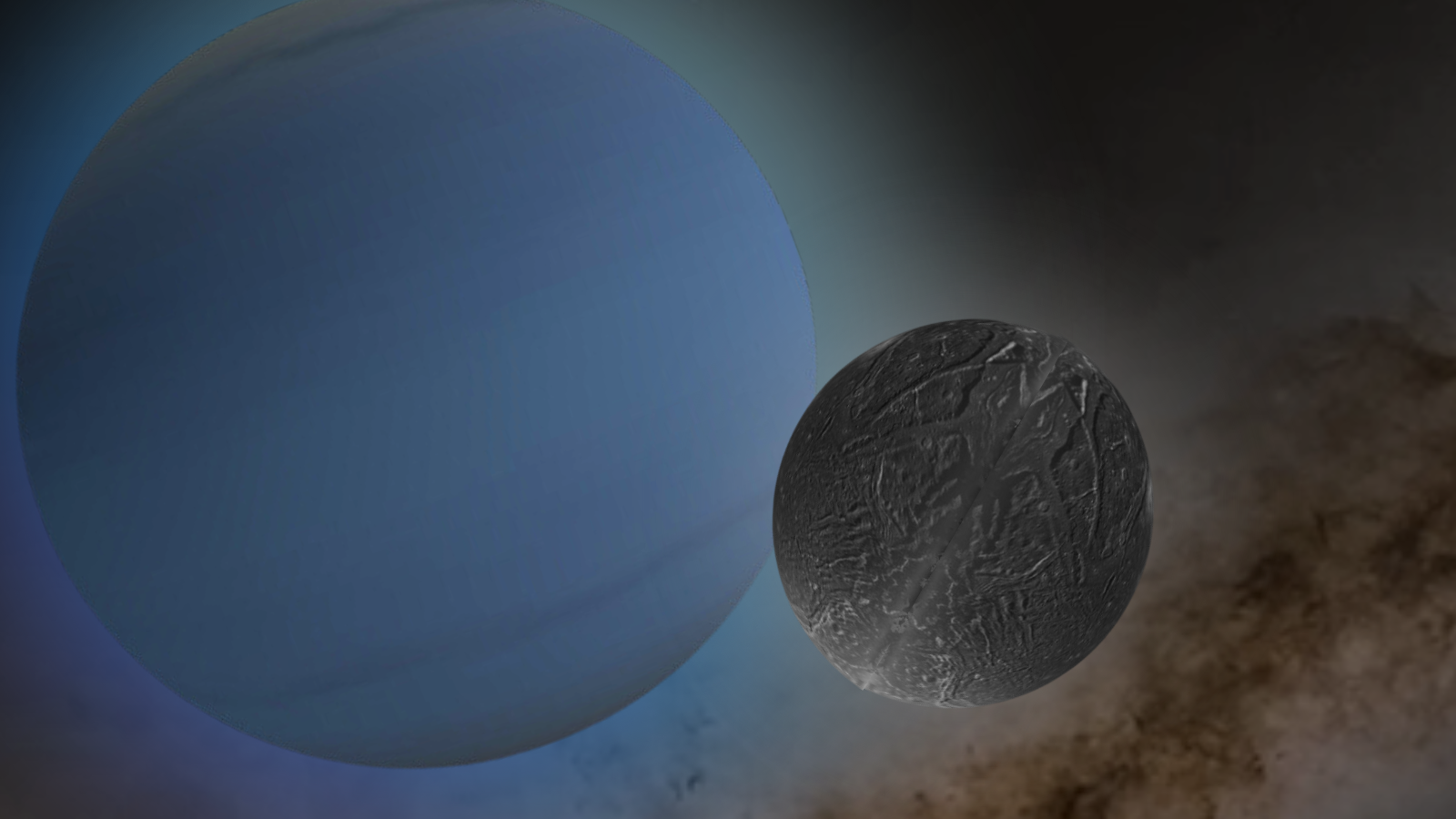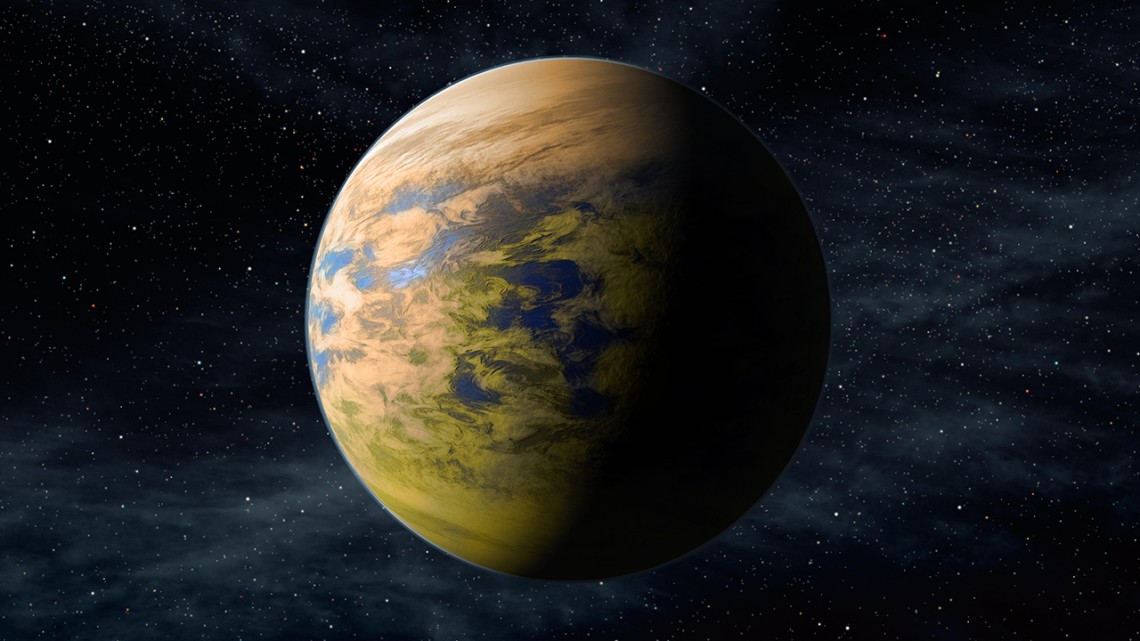A hidden ocean may have once existed on Uranus' moon Ariel
"Ultimately, we just need to go back to the Uranus system and see for ourselves."

Ariel, one of Uranus' icy moons, may once have concealed a vast ocean more than 100 miles (170 kilometers) deep beneath its frozen crust, according to new research. The findings add to growing evidence that Uranus' moons could have been ocean worlds in the distant past.
At 720 miles (1,159 kilometers) across, Ariel is smaller than many of the moons orbiting the planets Jupiter and Saturn. Yet, its surface is exceptionally bright and unusually complex, with ancient cratered terrain lying alongside much younger, smoother plains likely shaped by cryovolcanism, a type of volcanism that happens on icy bodies
"Ariel is pretty unique in terms of icy moons," study co-author Alex Patthoff, a senior scientist at the Planetary Science Institute in Arizona, said in a statement.
Led by Caleb Strom of the University of North Dakota, the researchers set out to determine Ariel's past interior structure and orbital eccentricity — how much its orbit once strayed from a perfect circle — to explain the dramatic features visible on the moon's surface today.
To do this, the team modeled how Uranus' gravity would have stretched and squeezed Ariel over time, fracturing and reshaping the moon's icy crust.
The analysis concluded Ariel's orbit once had an eccentricity of about 0.04, roughly 40 times greater than what it exhibits today. That would have made its orbit four times more eccentric than Europa, Jupiter's icy moon that displays a fractured, geologically active surface.
The scale of Ariel's cracks and ridges, the researchers inferred, could only be explained if the crust was flexing over a liquid layer. Either Ariel harbored a massive ocean covered by a relatively thin ice shell, or a smaller ocean paired with stronger orbital stresses.
Breaking space news, the latest updates on rocket launches, skywatching events and more!
"But either way, we need an ocean to be able to create the fractures that we are seeing on Ariel's surface," Patthoff said in the statement.
This work follows a 2024 study by the same team that found evidence of a past subsurface ocean on Miranda, another of Uranus' moons. Together, the findings suggest Uranus may once have hosted multiple ocean-bearing satellites.
"We are finding evidence that the Uranus system may harbor twin ocean worlds," study co-author Tom Nordheim of Johns Hopkins University Applied Physics Laboratory, who is the principal investigator of the NASA grant supporting the research, said in the statement.
Subsurface oceans are a central focus in planetary science because they represent potential habitats for life. Liquid water provides the chemistry needed for biology, and in hidden oceans beneath ice shells, tidal heating or radioactive decay can supply the energy to sustain it, even far from the sun.
Although scientists do not yet know when Ariel's ocean formed, how long it lasted, or whether it still exists in some form, the study offers valuable insight into how such oceans evolve in the outer solar system.
The study also bolsters growing calls for a dedicated mission to Uranus. The Uranus Orbiter and Probe, recommended by the National Academies' planetary science decadal survey as NASA's highest-priority flagship mission to begin in 2023–2032, would orbit the planet for at least five years, release an atmospheric probe and explore its rings and moons in detail.
Although Congress has not yet allocated funding, scientists argue such a mission could answer major questions about Uranus' extreme tilt, its dense ring system and its potentially ocean-bearing moons. Much remains unknown about Uranus, and such a mission could be transformative — similar to how NASA's Cassini mission revolutionized knowledge of Saturn, uncovering the dynamics of its rings and revealing Titan as a world with lakes, rain and a complex atmosphere, Kathleen Mandt, a planetary scientist at The Johns Hopkins University Applied Physics Laboratory in Maryland, previously told Space.com.
So far, spacecraft have only imaged the southern hemispheres of Ariel and Miranda. The team's models may help predict what a future mission could discover in their unexplored northern regions, including additional fractures, ridges and resurfaced terrain.
"Ultimately, we just need to go back to the Uranus system and see for ourselves," Nordheim said in the statement.
The study was published in the Jan. 2026 edition of the journal Icarus.

Sharmila Kuthunur is an independent space journalist based in Bengaluru, India. Her work has also appeared in Scientific American, Science, Astronomy and Live Science, among other publications. She holds a master's degree in journalism from Northeastern University in Boston.
You must confirm your public display name before commenting
Please logout and then login again, you will then be prompted to enter your display name.
